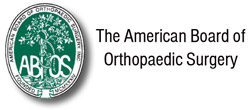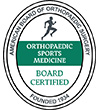What Is the P.O.L.I.C.E. Principle?
The P.O.L.I.C.E. principle may be the new way to ice and otherwise treat a musculoskeletal injury, such as a sprain or strain. The acronym stands for the five steps involved: protection, optimal loading, ice, compression, and elevation. One thing it's missing? Rest, a component of the long-used R.I.C.E. method (rest, ice, compression, and elevation). Some healthcare practitioners now consider P.O.L.I.C.E. an advanced and favored approach.
Meniscal Tear Repair: What’s New in the Literature?
Meniscal tear repair has become the gold standard modality for treating different types of meniscal tears. Despite the availability of numerous repair techniques, the ideal approach remains unclear, especially for complex and irreparable tears. Recently, innovative techniques have emerged to address these challenges, including hybrid/salvage techniques, meniscal scaffolds, and the introduction of biologics as part of the treatment.
Traumatic Versus Atraumatic Causes of Shoulder Impingement Syndrome: A Systematic Review of Pathophysiology and Outcomes
Shoulder impingement syndrome (SIS) is a common musculoskeletal disorder caused by traumatic or atraumatic factors, resulting in pain, functional limitation, and reduced quality of life. This systematic review aimed to summarize the pathophysiology, anatomical changes, and functional outcomes of traumatic versus atraumatic SIS.
What Causes Infraspinatus Pain and How Can You Treat It?
The infraspinatus muscle works alongside three other rotator cuff muscles to stabilize and move the shoulder. This triangular-shaped structure primarily externally rotates the arm. This means it rotates the arm toward the outside of the body. It also assists with moving the scapula (shoulder blade) when your shoulder joint is fixed (not moving). Occasionally, repetitive movements or other disorders can cause pain in this muscle.
Aerobic exercise found to be most effective for knee osteoarthritis
For patients with knee osteoarthritis, aerobic activities such as walking, cycling, or swimming are likely to be the best exercise for improving pain, function, gait performance, and quality of life, finds a study published by The BMJ today.
Q&A: How sports-related concussions affect reaction times
When playing sports, it's important to remember: Brains don't have seat belts. When rapid acceleration or deceleration of the brain inside the skull occurs with a blow to the head, a concussion happens, which in some cases can lead to lasting impacts on motor and cognitive skills needed to keep athletes at the top of their game.
ACL reconstruction with reinforced bioinductive implant may yield favorable outcomes
Published results showed the inclusion of a reinforced bioinductive implant during ACL reconstruction may lead to favorable range of motion, pain and functional outcome scores, as well as low rates of clinical retear at 1-year follow-up.
How to protect young athletes from ACL tears, other knee injuries
The season ending knee injuries of top South Florida professional athletes Tyreek Hill and Alexander Barkov have many thinking about how to protect younger athletes from suffering similar ailments.
What Happens to Your Body When You Play Tennis Regularly
Research shows tennis may extend lifespan and improve heart health, bone strength, mobility, and social connection. While injuries, cost, and access can be drawbacks, experts agree that tennis provides broad health benefits.
Shoulder Impingement Pain Syndrome: Pathophysiology, Diagnosis, and a Review of Current Treatment Strategies
The shoulder is an intricate joint, capable of a wide range of movements for both daily activities and physical exercise. This intricate joint is susceptible to various injuries and conditions due to its design.





